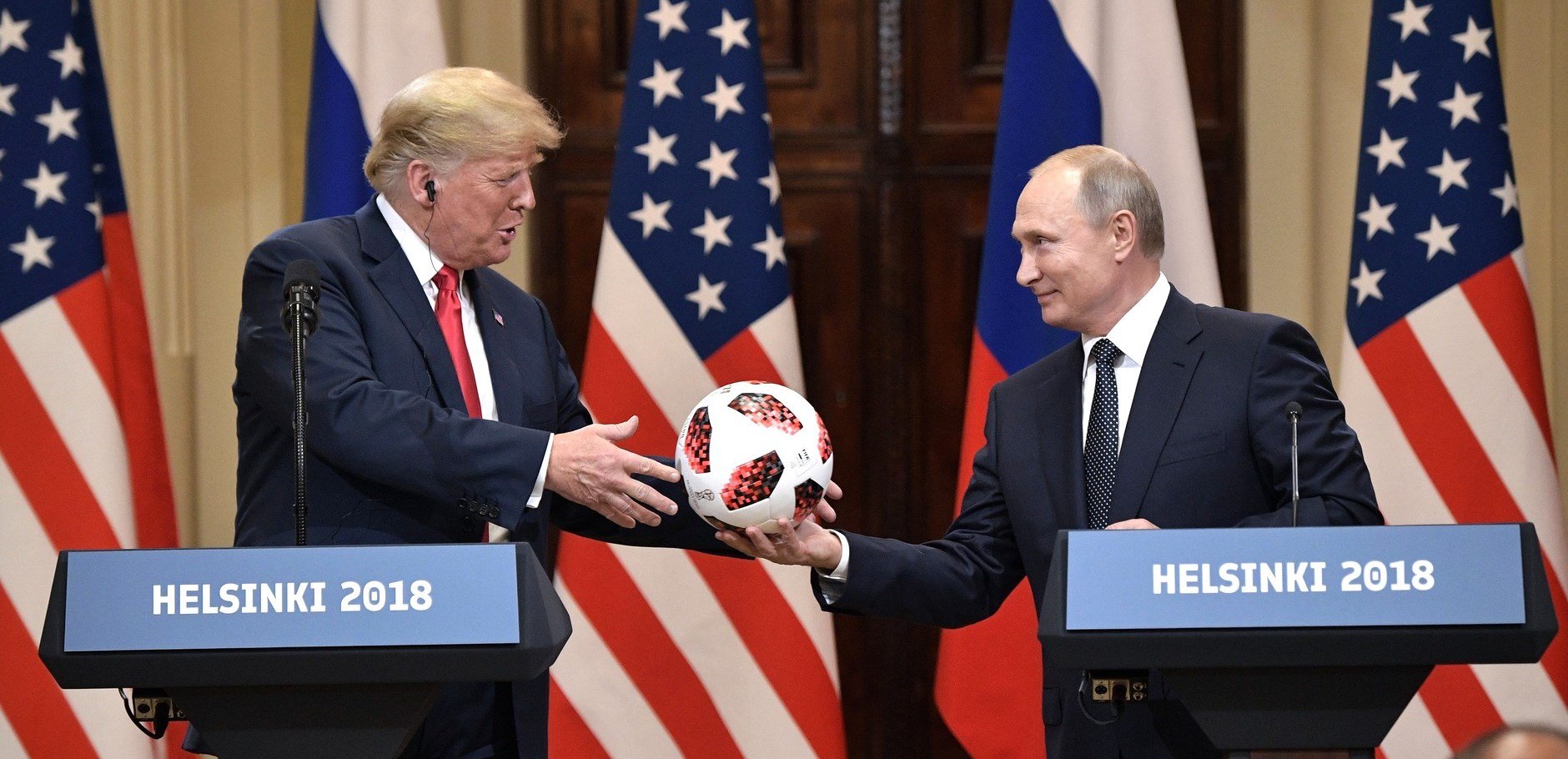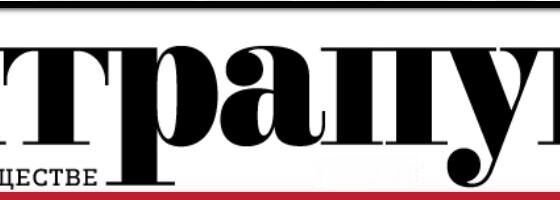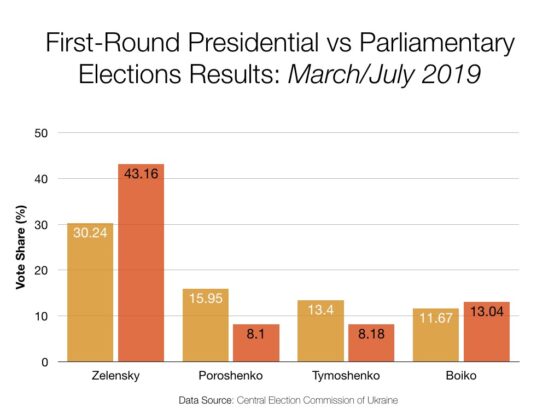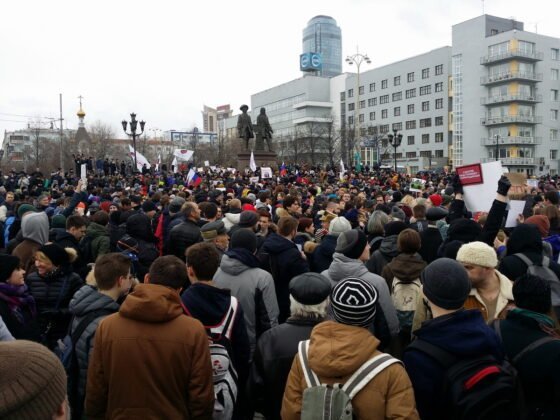
Presidents Donald Trump and Vladimir Putin make statements and answer journalists’ questions in Finland on July 16.
► The U.S. president probably expected to declare that he had a “very good” meeting with the formidable Vladimir Putin and had achieved what none of his White House predecessors had. Instead, Donald Trump’s performance, particularly at the press conference, inflicted on him accusations of naïveté and even treason, and his retractions hardly repaired the damage. This is disquieting news for Putin: instead of a much needed defrosting of U.S.-Russian relations, America’s anti-Russia policy may get harder still.
Fyodor Lukyanov, Editor, Russia in Global Affairs:
MOSCOW — As the insightful U.S. diplomat and scholar Chas Freeman put it recently, in the age of social media, celebrity is authority. Few know that better than President Trump, for whom flamboyant appearance is more important than substance. What could generate broader coverage than a joint show with someone who is already a renowned “celebrity” or political brand?
It seems that this was one of the reasons why Trump so actively pushed for a meeting with Russian President Vladimir Putin — a bad idea according to almost everyone back in Washington. To meet with a person referred to in the United States as “evil” would confirm the reputation of a fearless nonconformist who never bows to the establishment — a public image much loved by Trump’s base.
|
“Trump looked much less confident and articulate than usual, and his introductory remarks were significantly less substantial and concrete than Putin’s.”
|
Things went differently, though. Commentators in Russia noted that Trump looked much less confident and articulate than usual, and his introductory remarks were significantly less substantial and concrete than Putin’s.
Numerous questions asked by American journalists about the alleged Russian meddling in the 2016 U.S. election and implications of collusion put Trump in a very uncomfortable position: since he basically sided with the Russian president who denied all allegations, during the joint show Trump looked sidelined by Putin.
How did Putin manage to steal the show? He had concrete and simple goals for this long-anticipated summit.
1. Meeting per se in the first place
First of all, most policymakers, pundits, and commentators in Russia agree that a situation where leaders of two nuclear superpowers don’t communicate properly and don’t even have a clear agenda is abnormal. However tense relations are, talking is important. During the Cold War, it was clear that talking helped mitigate some of the most acute crisis episodes. In this regard, the very act of meeting, with an attempt to establish a regular communication channel, is seen as an achievement.
2. Nuclear arms control
Second, nuclear arms control and strategic stability are issues that Moscow and Washington can’t avoid discussing under any circumstances. They share a global responsibility for maintaining and managing over 90 percent of the world’s nuclear warheads. And Russia is especially eager to stick to this issue because it is the only area where the two countries are still equal.
|
“Putin brought the issue back on track when he clearly stated that it was necessary to extend the New START beyond 2021 and address mutual concerns about the INF Treaty.”
|
With the New START Treaty about to expire in three years and the Intermediate-Range Nuclear Forces Treaty under threat, future principles of strategic stability must be discussed. During the past couple of years experts raised concerns that the lack of interest in this issue on both sides may result in a collapse of the whole system of nuclear arms control. While traditional arms controller emphasized the need to build on existing treaties and prepare new ones, more recently the thinking on both sides (mostly in the US among neo-conservatives, but also among the Russian military) has been that bilateral documents are outdated legacy of the past. Putin brought the issue back on track when he clearly stated that it was necessary to extend the New START beyond 2021 and address mutual concerns about the INF Treaty. Trump was, as always, less specific, but he stressed mutual responsibility in this area. The statements that expressed the presidents’ desire to intensify talks on these issues in the form of a working group and even create a high-level expert panel is, at least a sign, that this issue will not be neglected.
3. Syria, Israel, and Iran
Third, Syria was an indispensable part of the discussion, and based on what Putin said, the dialogue was fruitful. Putin publicly mentioned the “security of the state of Israel” and referred to the Golan Heights as an example of a stable security model. Although the Golan Heights was annexed by Israel 1973 and politically has always remained an acute conflict issue between Syria and Israel, in terms of security, it has worked well, and this area has been stable and efficiently manageable, under the rule of both Hafez al-Assad and Bashar al Assad. Most importantly, it was a working bilateral arrangement with a modest UN presence as a guarantor. Putin’s reference can be interpreted as a vow to give Damascus and Tel Aviv an opportunity to settle their security relations without interference of “third parties” such as Iranian or pro-Iranian presence.
|
“For Trump, Syria has been a burden he’s happy to outsource to Moscow. Russia’s policy in Syria is more complicated.”
|
Paradoxically, Syria has become the easiest part of the troubled U.S.-Russian relationship. For Trump, Syria has been a burden he’s happy to outsource to Moscow. Following the defeat of the Islamic State, Washington’s policy regarding the region was muscle-flexing rather than a manifestation of strategy. Trump simplified the U.S. policy in the Middle East by placing a premium on Israel and Saudi Arabia for ideological and mercantile reasons, respectively.
Russia’s policy in Syria is more complicated. Russia’s combination of military force with subtle and proactive multilateral diplomacy is paving the way for strengthened central authorities in Syria. Russia is showing uncharacteristic flexibility by taking into account the security interests of the key players and reaching out to Turkey, Israel, Iran, and the Gulf states. Russia is also quite insistently prodding various Syrian opposition groups into political peace negotiations, even if not always successfully.
The United States seeks to sustain its presence in the Middle East and, if necessary, to exercise its clout over future developments. However, the approach is minimalist and selective. Russia, on the other hand, aims to engage all regional stakeholders since, in its opinion, Damascus can oversee the process of rebuilding Syria only on the condition that all internal and external forces agree — or at least remain neutral. Moscow sees the survival of the Syrian regime as the only way to preserve Syrian statehood.
|
“Despite the generally awful political atmosphere between the two states, the communication channel between their militaries in Syria is perhaps the most effective one Russia and the United States have at present.”
|
Trump prioritizes the containment of Iran and the security of Israel. That can be achieved by sustained efforts aimed at separating the security interests of Iran and Israel in Syria, i.e., identifying the areas where Iran should not be present, while Israel would have a free hand to deliver strikes when it sees security problems. Iran remains Russia’s indispensable partner in Syrian settlement, but Moscow doesn’t want to disrupt highly delicate and confidential relations with Israel. Neither Trump, nor other U.S. representatives are the main protagonists in this process. The key players include Israeli Prime Minister Benjamin Netanyahu and Putin — who have a high level of trust between them — as well as representatives of the Syrian government and top Iranian officials. But Trump has an opportunity to endorse this process, to solemnly give it the U.S. stamp of approval and to derive some benefit, in particular, please his supporters with a statement that he did guarantee security of Israel. This would suit everyone, including Russia. The interaction between the Russian troops and the U.S. military is central to the situation in Syria. Despite the generally awful political atmosphere between the two states, the communication channel between their militaries in Syria is perhaps the most effective one Russia and the United States have at present.
Those three points were particular Russian objectives at this summit. Limited, but doable. Contrary to Trump, Putin has no need to use this meeting for domestic purposes — Russians are only modestly interested in U.S.-Russian relations. This gave Putin much more room for maneuvering than Trump had.
But the fact that Putin is seen to have outmaneuvered Putin is also dangerous. The U.S. president weakened domestically can rush in the opposite direction, as happened a year ago after the Trump-Putin meeting in Hamburg. U.S.-Russian relations nearly collapsed then, because Trump had to reassure his critics at home that he was not Putin’s puppet. And the scale of the storm in the US caused by Trump’s Helsinki performance does not look good for U.S.–Russian relations, at all.

Putin presented Trump with an official 2018 World Cup football and wished the United States success in holding the 2026 World Cup.
Keith Darden, Associate Professor, American University:
WASHINGTON, DC — The meeting between Trump and Putin in Helsinki was a reminder, if one was needed, that leaders should beware of props to symbolize the U.S.-Russian relationship. The physical symbols tend to take on a meaning neither intended nor desired. The mistranslated “reset” button that Hillary Clinton presented to Sergei Lavrov in 2009 came to be an enduring icon of the misfires, misunderstandings, and miscalculations that ultimately ended in the annexation of Crimea, mutual sanctions, and a dangerous confrontation in Syria and Europe. In Helsinki, when President Putin tossed a World Cup ball to the U.S. President, with the comment that “the ball” was now in Trump’s hands, it was hard not have the sense that this gesture, too, would prove to be a dark omen. And indeed, most of the American political establishment watched in shame and horror as Trump (metaphorically, at least) swiftly kicked the ball into his own net, putting the blame for the sorry state of U.S.-Russian relations on the mistakes of his American predecessors and siding with Putin against his own intelligence agencies on the issue of Russian meddling in the 2016 elections.
|
“Most of the American political establishment watched in shame and horror as Trump (metaphorically, at least) swiftly kicked the ball into his own net.”
|
To be sure, the own-goal of the Helsinki summit was not entirely of Trump’s own making. The meeting was already overshadowed by the most recent indictment from U.S. Special Counsel Robert Mueller which, with meticulous precision, provided compelling evidence for direct involvement of Russian military intelligence in the 2016 U.S. Presidential elections. Unlike the vague intelligence report released to the public by U.S. intelligence agencies in December of 2016, the Mueller indictment showed methodically how everything was done. It gave the names, ranks, and units of the agents involved. It gave dates, times, and methods. In rigorous detail, it laid out precisely how Russian intelligence services had hacked into the command centers of the Democratic Party and disseminated compromising material intended to disrupt the Clinton campaign. The detailed public indictment has made a strategy of denying Russian involvement untenable for the President, as the negative bipartisan reaction made clear. At this point it is no more reasonable to deny the efforts of Russian military intelligence to influence the U.S. elections than it is to deny Russian occupation and annexation of Crimea. Trump shouldn’t have tried, and it showed the imperfection of his political instincts.
|
“Rather than the first of many meetings, the political backlash has given the meeting a terminal feel.”
|
Trump’s denial made a spectacle of the summit, and it is a spectacle that is not likely to be repeated. And in this, the meeting was a failure. Rather than the first of many meetings, the political backlash has given the meeting a terminal feel. In the lead-up to the summit, Trump seemed to hope that he could use this event to rewrite the narrative about Russia in a way that would make relations (perhaps even prior relations, during the Presidential campaign) seem normal rather than treasonous. It was pitched as a respectful meeting of great power rivals, and a return to diplomacy without histrionics or talk of appeasement. Acknowledging Russia’s capabilities and prior actions—including its cyber capabilities and the full nature of the threat that it can pose to the United States when relations sour—could have been a prelude to a disenchanted, realistic dialogue between two powerful adversaries. But in his fawning public efforts to show that Putin could be trusted and in his betrayal of his own government, Trump just reinforced the sense that the U.S. President could not be trusted to handle relations with Russia. A stridently anti-Russia U.S. Congress will continue to take the lead, with instruments both blunt and ineffective.
|
“In his fawning public efforts to show that Putin could be trusted and in his betrayal of his own government, Trump just reinforced the sense that the US President could not be trusted to handle relations with Russia.”
|
This is a loss for both Putin and Trump. It is also a shame, as there are good reasons for bilateral meetings between the US and Russia even in the absence of concrete agreements and results. Not talking to Russia does not make them go away, and both the United States and Russia pose grave existential threats to one another that need to be carefully managed. Russia may have a small and lackluster economy, but it concentrates its resources well enough to sustain itself as a peer competitor in key security arenas. The bilateral relationship exists whether we acknowledge it or not, and remains a fulcrum upon which stability and instability hinges in Europe, the Korean Peninsula, and increasingly the Middle East. It is clearly better to manage the relationship, and tending to the relationship is hard to do in the absence of sustained contact. The lack of dialogue increases both miscalculation and malice in U.S.-Russian relations, and neither are beneficial to either side.
Mr. Trump seems to have a powerful intuitive sense of the importance of maintaining the dialogue. His willingness to look forward—to focus not on what Russia has done, but on what they can do for us now—is politically difficult domestically but possibly the correct instinct. Yes, the Russian government has acted in ways that are destabilizing and counter to U.S. interests. And the US has acted in ways that are certainly destabilizing and counter to Russian interests. But “what’s done cannot be undone,” and there is certainly a compelling argument to be made that Russia is more dangerous when the U.S. government refuses to talk to them, driving them deeper into the pocket of Xi Jinping, and removing their incentives to create and sustain a stable order. That might be the strategic vision that both Trump and Putin share, but what transpired in Helsinki (while perhaps seemingly a tactical success for Putin) will make it far more difficult to realize going forward.

The news conference following the meeting between the presidents of Russia and the United States.
 Image credits: Kremlin.ru
Image credits: Kremlin.ru








